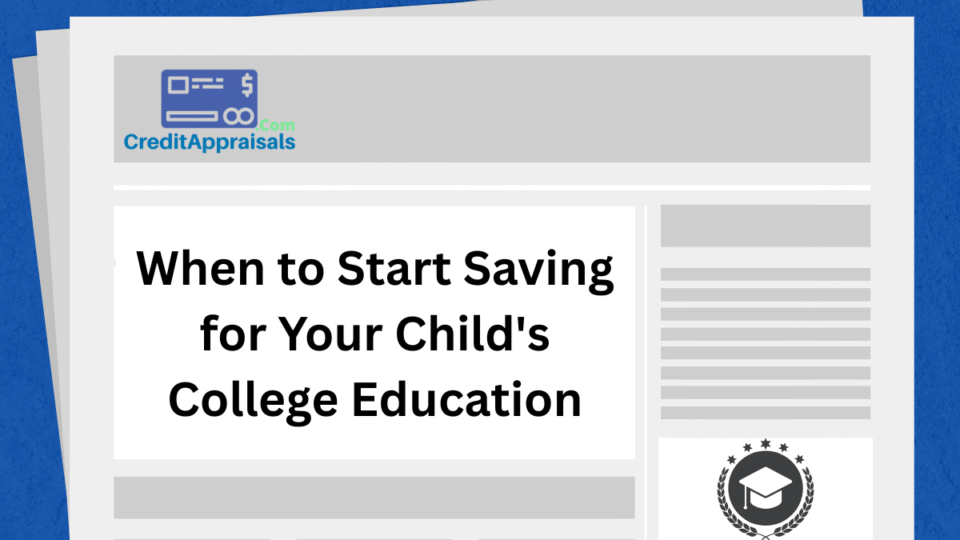College is one of the biggest expenses families face. Tuition keeps rising, and student debt is a growing burden for millions of Americans. Many parents want to help their kids avoid that path, but figuring out when to start saving can be tricky. Some families wait too long. Others start early but don’t use the right savings tools. So when should you begin saving for your child’s college education? The short answer is: as early as possible. But the full answer deserves a deeper look.
The Sooner You Start, the Better
Compound interest works best over time. Even small contributions can grow into something significant if you start early. If you begin saving when your child is a baby, you give your money 18 years to grow. That gives you a huge advantage over someone who starts when their child enters high school.
For example, let’s say you invest $100 a month starting at birth. Over 18 years, assuming a modest 6 percent annual return, you could end up with nearly $40,000. If you start that same $100 a month plan at age 10, you’ll have less than half that amount by the time your child turns 18.
This isn’t just about math. It’s about mindset. Starting early gives you more flexibility. You can save smaller amounts over time instead of feeling pressure to play catch-up later.
Life Happens and Delays Are Common
Many parents don’t start saving early, and it’s not because they’re careless. Life gets in the way. You might be paying off your own student loans. You might be saving for a house or dealing with job instability. And after having a child, the expenses start rolling in fast. Diapers, daycare, and medical bills can make college feel like a distant concern.
It’s understandable. But it’s important to recognize that the longer you delay, the more you’ll have to save each month later on. If you wait until your child is ten, you’ll need to contribute a much larger monthly amount to reach the same goal. That’s stressful. And it’s less likely to succeed.
The truth is, there may never be a “perfect” time to start saving. You might always feel like you need to prioritize something else. But college costs won’t wait. If you can only save a little now, that’s still better than nothing. You can increase your contributions as your financial situation improves.
Choosing the Right Savings Vehicle
Saving early is important. But how you save matters too. A regular savings account won’t cut it. It earns very little interest and doesn’t offer any tax advantages. If you’re serious about building a college fund, you need to use smarter tools.
A 529 plan is one of the most popular options. These are tax-advantaged accounts specifically designed for education savings. Money in a 529 grows tax-free and can be withdrawn tax-free for qualified education expenses. Most states offer their own version, and some offer tax deductions for contributions.
Another option is a custodial account under the Uniform Transfers to Minors Act (UTMA) or Uniform Gifts to Minors Act (UGMA). These accounts don’t have the same tax benefits, but they offer more flexibility in how the funds are used. However, the money in these accounts becomes the child’s asset once they reach a certain age, which could impact financial aid eligibility.
Some families use Roth IRAs as an alternative, especially if they’re not sure whether their child will go to college. Roth IRAs are retirement accounts, but you can withdraw your contributions (not the earnings) at any time, and qualified education expenses may be exempt from penalties. Still, this should be a secondary option, not your main college savings strategy.
What About Financial Aid?
Some parents think they don’t need to save because financial aid will cover the cost. That’s a risky assumption. Financial aid is usually a mix of grants, scholarships, loans, and work-study opportunities. It rarely covers everything. Even students who receive aid often need thousands of dollars more for tuition, housing, and books.
Also, not all aid is free money. Student loans make up a large portion of financial aid packages. And those loans can follow your child for decades. Just because your child qualifies for aid doesn’t mean you should skip saving.
In fact, having some savings might allow your child to choose a better school, avoid debt, or graduate with more options. That flexibility is worth the effort.
Balancing College Savings With Other Goals
It’s easy to feel torn between saving for your child’s future and managing your own. Should you contribute to a 529 plan if you haven’t fully funded your retirement? What about emergency savings or paying down debt?
Here’s the hard truth. You can borrow for college. You cannot borrow for retirement.
While it’s admirable to want to give your child a debt-free start, you shouldn’t sacrifice your own financial security to make it happen. If money is tight, focus first on building an emergency fund and contributing to your retirement plan. Then start college savings with whatever amount you can afford.
You can always adjust later. You might get a raise, receive a tax refund, or find extra money from cutting expenses. Those are good times to boost your contributions.
Involving Your Child in the Process
Once your child is old enough to understand, talk to them about college savings. Let them know that you’re planning ahead and that they can play a role too. This builds financial awareness and a sense of ownership.
Encourage them to apply for scholarships and work part-time if needed. Show them how student loans work and what they’ll owe after graduation. These conversations can be uncomfortable, but they’re necessary.
College planning is a family decision. The more your child understands the effort behind saving, the more they’ll appreciate the opportunity. They may even be more motivated to make the most of it.
Final Thoughts
The best time to start saving for your child’s college education is now. Not when they’re older. Not when you get a raise. Not when life slows down. Time is your biggest asset, and starting small is better than not starting at all.
Use the right tools. Make saving a habit. Reevaluate your budget as life changes. And be realistic. College is expensive, but it’s not all or nothing. Even partial savings can make a major difference.
At CreditAppraisals.com, we believe in honest, practical advice for real families. College planning is a long road, but you don’t have to walk it blindly. A smart start today can lead to a more secure future for your child and for you.


